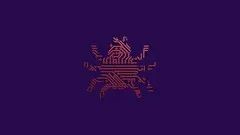
Web Application Hacking & Security for beginners 
Learn the essential skills to protect your website from hackers with the Web Application Hacking & Security for beginners course. Discover how vulnerabilities in website code can be exploited by attackers, and gain control over your site and hosting server. Explore common web application vulnerabilities such as SQL Injection and Cross Site Scripting, and learn how to prevent them. Utilize Kali Linux, a specialized Linux distribution for cybersecurity, to conduct penetration testing and identify vulnerabilities. With a focus on secure coding and web application firewalls, this course will equip you with the knowledge to safeguard your valuable data. ▼
ADVERTISEMENT
Course Feature
![]() Cost:
Cost:
Paid
![]() Provider:
Provider:
Udemy
![]() Certificate:
Certificate:
Paid Certification
![]() Language:
Language:
English
![]() Start Date:
Start Date:
2022-08-07
Course Overview
❗The content presented here is sourced directly from Udemy platform. For comprehensive course details, including enrollment information, simply click on the 'Go to class' link on our website.
Updated in [September 27th, 2023]
What does this course tell?
(Please note that the following overview content is from the original platform)A website vulnerability is a weakness or misconfiguration in a website or web application code that allows an attacker to gain some level of control of the site and possibly the hosting server Most vulnerabilities are exploited through automated means such as vulnerability scanners and botnets There are a lot of common web application vulnerabilities as a result of insecure code development practices or using vulnerable software some examples are: SQL Injection Cross Site Scripting (XSS) Command Execution File Injection Cross Site Request Forgery (CSRF) etcKali Linux is a Linux distribution that is specialized for cybersecurity It is an open-source product that involves a lot of customization for penetration testing which helps companies to understand their vulnerabilities It is maintained and funded by Offensive SecurityA web application firewall (WAF) protects web applications from a variety of application layer attacks such as cross-site scripting (XSS) SQL injection and cookie poisoning among others Attacks to apps are the leading cause of breaches they are the gateway to your valuable dataIn this course you will learn about web application ethical hacking techniques including using some Kali Linux tools:Introduction to web penetration testing and ethical hackingDesigning and building a lab environment for pen testingUnderstanding website vulnerabilities and general attacksUnderstanding how to protect your website against attacksSecure coding and web application firewalls
We considered the value of this course from many aspects, and finally summarized it for you from two aspects: skills and knowledge, and the people who benefit from it:
(Please note that our content is optimized through artificial intelligence tools and carefully reviewed by our editorial staff.)
What skills and knowledge will you acquire during this course?
During this course, the learner will acquire the following skills and knowledge:
1. Understanding of web application vulnerabilities: The learner will gain knowledge about common web application vulnerabilities such as SQL Injection, Cross Site Scripting (XSS), Command Execution, File Injection, Cross Site Request Forgery (CSRF), and more. They will learn how these vulnerabilities can be exploited by attackers to gain control of a website or web application.
2. Knowledge of Kali Linux tools: The learner will be introduced to Kali Linux, a specialized Linux distribution for cybersecurity. They will learn how to use various Kali Linux tools for web application penetration testing, which helps in identifying vulnerabilities and understanding their impact.
3. Designing and building a lab environment: The learner will understand the importance of creating a lab environment for penetration testing. They will learn how to design and build a secure lab environment that simulates real-world scenarios, allowing them to practice ethical hacking techniques without causing harm to live systems.
4. Understanding of website vulnerabilities and general attacks: The learner will gain a comprehensive understanding of different types of website vulnerabilities and general attack techniques. They will learn how to identify and exploit these vulnerabilities, enabling them to assess the security of web applications effectively.
5. Knowledge of web application firewalls (WAF): The learner will understand the role of web application firewalls in protecting web applications from various application layer attacks. They will learn about different types of attacks, such as cross-site scripting (XSS), SQL injection, and cookie poisoning, and how a WAF can mitigate these risks.
6. Secure coding practices: The learner will acquire knowledge about secure coding practices to develop web applications that are resistant to common vulnerabilities. They will learn about best practices for secure coding, including input validation, output encoding, and proper handling of user authentication and session management.
Who will benefit from this course?
This course on Web Application Hacking & Security for beginners will benefit individuals and professionals who are interested in or involved in the following areas:
1. Web Developers: Web developers will benefit from this course as it will provide them with a comprehensive understanding of common web application vulnerabilities and how to secure their code. They will learn about secure coding practices and how to protect their websites against attacks.
2. Cybersecurity Professionals: Cybersecurity professionals, including ethical hackers and penetration testers, will find this course valuable as it covers various web application hacking techniques using Kali Linux tools. They will learn how to identify and exploit vulnerabilities in web applications, which will help them in assessing the security of websites and web applications.
3. IT Administrators: IT administrators responsible for managing and securing web applications will benefit from this course as it will provide them with knowledge about website vulnerabilities and general attacks. They will learn how to design and build a lab environment for penetration testing and understand the importance of web application firewalls in protecting web applications.
4. System Administrators: System administrators who are responsible for maintaining the security of hosting servers will find this course useful. They will learn about common web application vulnerabilities that can be exploited to gain control of the hosting server. This knowledge will help them in implementing necessary security measures to protect the server from attacks.
5. Security Analysts: Security analysts who are involved in assessing the security posture of websites and web applications will benefit from this course. They will gain insights into various web application vulnerabilities and understand how to protect websites against attacks. This knowledge will enable them to identify and mitigate potential security risks.
Course Syllabus
Introduction to Web Security and Penetration Testing
Building a Test Lab Environment
Web Application Vulnerabilities and Attacks
Kali Linux Tools for Web Application Security and Pen Testing
Web Application Development Security and Web Application Firewalls
Course Provider

Provider Udemy's Stats at AZClass
Discussion and Reviews
0.0 (Based on 0 reviews)
Explore Similar Online Courses

Human Values and Professional Ethics

Alimentos fermentados

Python for Informatics: Exploring Information

Social Network Analysis

Introduction to Systematic Review and Meta-Analysis

The Analytics Edge

DCO042 - Python For Informatics

Causal Diagrams: Draw Your Assumptions Before Your Conclusions

Whole genome sequencing of bacterial genomes - tools and applications

Clojure Basics

Certified Secure Web Application Engineer (CSWAE)


Start your review of Web Application Hacking & Security for beginners